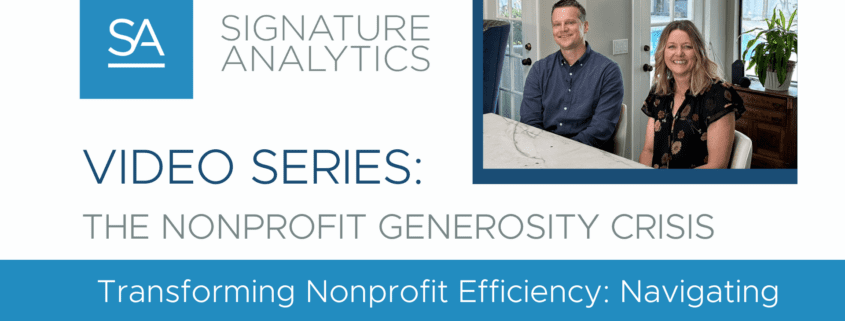Transforming Nonprofit Efficiency: Navigating Technology and Systems Integration
In the nonprofit sector, especially during times of the generosity crisis, the role of technology and systems integration cannot be underestimated. As organizations navigate the complexities of increased donor engagement and expanding operational scopes, the necessity for cohesive technological solutions becomes paramount.
The Challenge of Disparate Systems
Many nonprofits face the hurdle of disjointed technological frameworks, where essential systems operate in silos, hindering efficiency and data coherence. This fragmentation often leads to the cumbersome task of manual data reconciliation, detracting from the core mission-focused activities.
“Embracing advanced technology and system integration in nonprofits isn’t just an operational upgrade; it’s a strategic move towards greater mission fulfillment and efficiency.”
Case Study: A Journey to Technological Cohesion
Let’s delve into a real-world scenario where a nonprofit grappled with such challenges. Initially plagued by uncommunicative systems, this organization struggled with data management inefficiencies, particularly in managing an expanded donor base during the COVID era.
The Role of CRM and ERP Systems
A robust Customer Relationship Management (CRM) system, integrated with an Enterprise Resource Planning (ERP) system, is crucial for streamlining operations. Such integration not only simplifies accounting and donor management but also eliminates the labor-intensive processes traditionally associated with disparate systems.
Moving Beyond Excel
While Excel has been a staple in organizational data management, its limitations become apparent with scaling. Our case study organization found that reliance on Excel for complex data operations was a bottleneck, signaling the need for more advanced, integrated solutions.
The Impact of Proper Training and Implementation
The transition to more sophisticated systems is not just about the technology itself but also about ensuring that staff are adequately trained. Without proper understanding and utilization, even the most advanced systems can revert users to their “old faithful” Excel spreadsheets, undermining the benefits of technological upgrades.
The journey from technological fragmentation to integration exemplifies a crucial pivot point for nonprofits. By embracing interconnected systems and ensuring comprehensive user training, organizations can significantly enhance their operational efficiency, allowing them to focus more on their mission-critical objectives.
How Signature Analytics Can Help Your Nonprofit
Signature Analytics’ nonprofit accounting services help you make financial decisions based on the highest quality accounting practices, while our day-to-day outsourced accounting teams implement the highest quality donor and government accounting standards.
For additional assistance with cash flow management, developing detailed nonprofit budgets, and audit support, contact Signature Analytics today.




